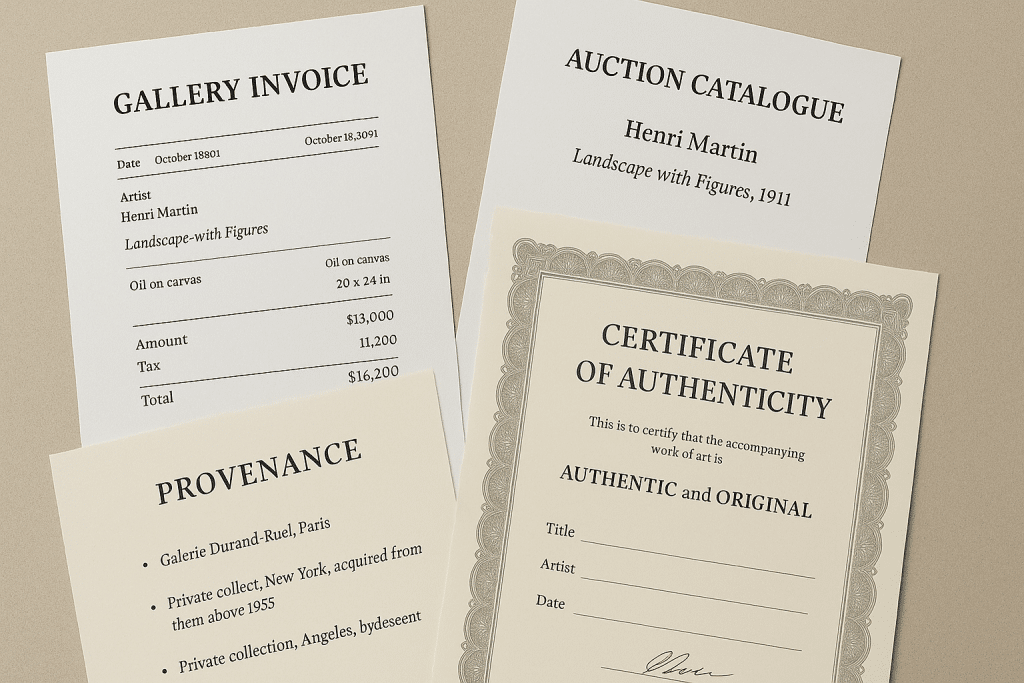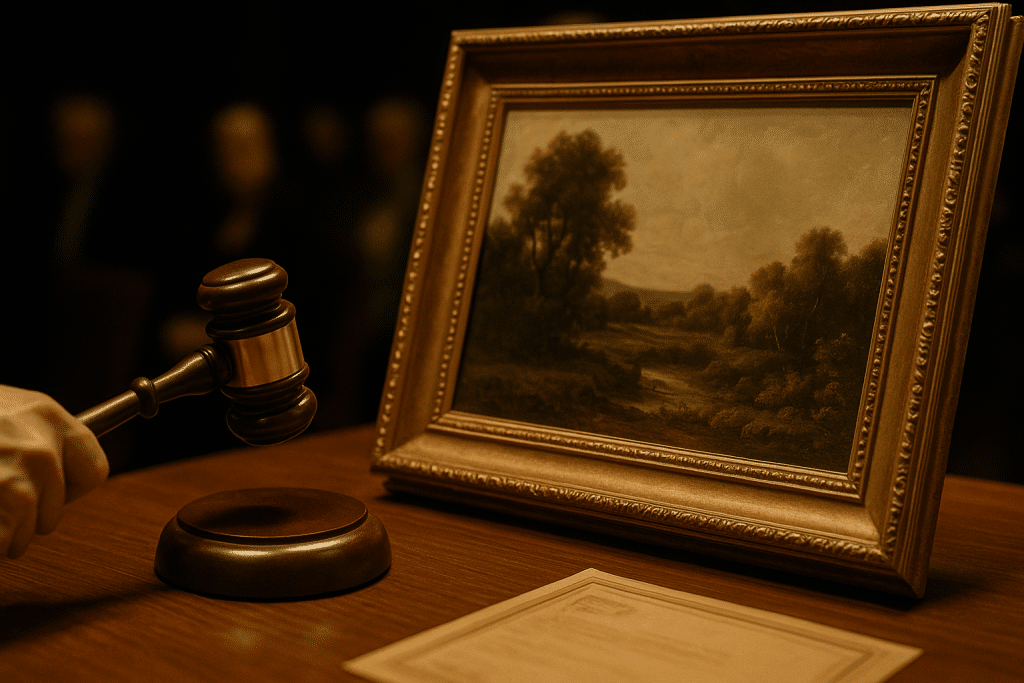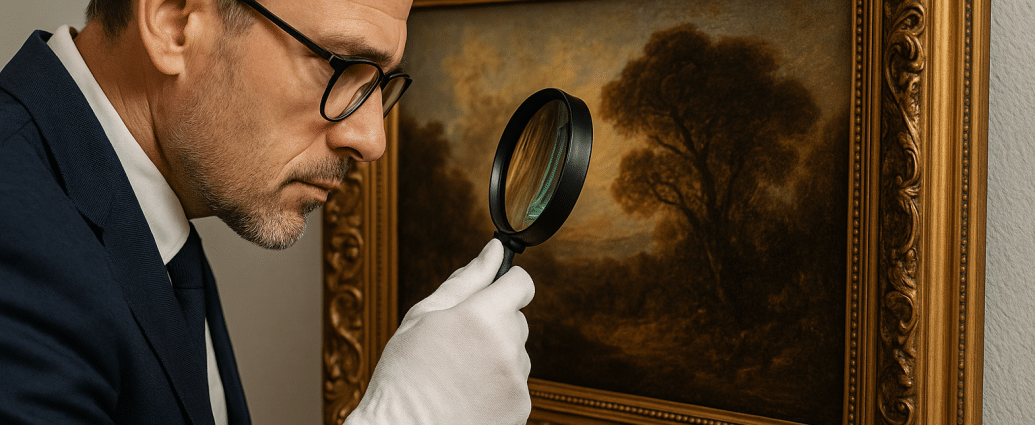In the art world, provenance is often described as an artwork’s “birth certificate.” It refers to the documented history of an object’s ownership and is a critical factor in establishing authenticity, value, and legal title. For collectors, investors, and institutions, provenance is not simply paperwork — it is the foundation of trust.
This guide will explain what provenance is, why it matters, the types of documents you should expect, how to verify provenance before buying, and how to build provenance for your own collection. Along the way, we will explore common red flags, modern challenges such as digital provenance, and famous case studies where provenance made or broke artworks.
If you are new to collecting, you may also find our Ultimate Guide to Starting an Art Collection useful, as well as our guide on How to Authenticate Art, which complements this article.
What is Provenance?
The word “provenance” comes from the French provenir, meaning “to come from.” In art, it refers to the chronology of ownership, custody, or location of a work from its creation to the present day.
Provenance should not be confused with authentication, which concerns whether the artwork is genuine, or valuation, which determines market worth. Instead, provenance provides a documented chain of custody that supports authenticity and value.
A complete provenance typically shows:
- The artist or creator.
- Initial point of sale or commission.
- Subsequent owners (private and institutional).
- Exhibition history.
- Inclusion in published catalogues or academic studies.
For buyers, provenance reassures that the artwork is genuine, legally obtained, and potentially valuable. For sellers, it strengthens market confidence and pricing.
The Role of Provenance in Authentication
Provenance is one of the strongest tools in verifying authenticity. While scientific analysis and expert opinion are essential, an unbroken chain of ownership often determines whether a work is accepted into museums, auction houses, or collections.
Auction houses like Sotheby’s and Christie’s refuse to handle works with insufficient provenance, not only for reasons of authenticity but also for legal liability. Museums may reject loans if provenance has unexplained gaps.
In practice, authentication and provenance are deeply connected. A complete ownership record can reinforce an attribution, while gaps or inconsistencies can raise suspicion.
For a beginner’s overview of the authentication process, see our How to Authenticate Art: A Beginner’s Guide.

What Provenance Documents Should Include
Not all provenance records are created equal. Some are robust and verifiable, others vague or fabricated. Knowing what to expect is crucial.
Core Documents
- Gallery invoices and sales receipts: Proof of purchase, often with detailed descriptions.
- Auction records: Publicly available documentation of sales at major houses.
- Artist certificates or letters: Signed documents from the artist or estate.
- Exhibition catalogues: Evidence the work has been displayed publicly.
- Catalogue raisonnés: Scholarly listings of an artist’s complete works, which often note provenance.
Supporting Evidence
- Photographs in situ: Images of the work in previous owners’ homes or exhibitions.
- Condition reports: Often produced during sales, loans, or insurance valuations.
- Appraisals and expert reports: Independent assessments of authenticity and value.
For a step-by-step breakdown, see our forthcoming cluster article: How to Read Provenance Documents Like a Pro.
Why Provenance Matters for Value and Insurance
Provenance is not only about authenticity; it also directly impacts financial value.
Provenance and Market Value
Works with strong provenance often sell at significant premiums. A painting with an unbroken chain of ownership that includes a prestigious collection, or a history of exhibitions in respected institutions, is seen as more trustworthy and therefore more valuable.
For instance, the rediscovery of a lost Leonardo da Vinci, Salvator Mundi, was driven by provenance research that connected it to historical references. Its sale for over $450 million in 2017 was influenced as much by its provenance as by its attribution.
Provenance and Insurance
Insurers require provenance documentation before issuing specialist art cover. Without clear records, you may find your works undervalued, excluded, or difficult to claim in case of loss.
For more on art as an investment, see Is Art a Good Investment? What Every Collector Should Know. For details on protecting your collection, see How to Care for Your Artwork: Storage, Framing, and Preservation Tips.
Common Provenance Red Flags
Not all provenance claims can be trusted. Here are some warning signs to watch out for:
- “Private collection, Europe” or similar vague phrases: Without specific names or dates, such claims are meaningless.
- Unverifiable certificates: Anyone can produce a certificate of authenticity; the issuer matters.
- Gaps in the timeline: Long periods without documentation create opportunities for fakes.
- Contradictions: A work said to be painted in 1920 that uses pigments only available later.
- Provenance stories that sound too good to be true: They often are.
To explore these risks in detail, see our cluster article Top Provenance Red Flags Every Collector Should Know.
Provenance in the Digital Age
The traditional model of provenance — piles of receipts and catalogues — is evolving.
Online Marketplaces
Some online platforms, such as Saatchi Art or Singulart, provide artist biographies and edition details. Others may give little beyond a product listing. Always ensure provenance information is clear when buying online. See our Where to Buy Art Online: The Best Marketplaces.
Blockchain and NFTs
The rise of NFTs has introduced blockchain-based provenance, where each transaction is recorded on a decentralised ledger. In theory, this creates an unbreakable chain of ownership. In practice, risks remain: platforms can fail, metadata can disappear, and scams are common.
See our forthcoming cluster article The Future of Provenance: Blockchain, NFTs, and Digital Certificates.
How to Build Provenance for Your Own Collection
Provenance is not only for museums or wealthy collectors. Even beginners should document their acquisitions properly.
- Keep all receipts and certificates: Store both physical copies and digital scans.
- Photograph works when purchased: Include close-ups, signatures, and framing.
- Record framing, restoration, and condition reports: Each event adds to the history.
- Catalogue your collection: Use a spreadsheet or an app (such as Provault) to track title, artist, medium, dimensions, price, and provenance.
- Estate planning: If your collection grows in value, ensure records are organised for inheritance or sale.
For a practical, hands-on guide, see Beginner’s Guide to Documenting Your Own Art Purchases.

Case Studies: Provenance That Made or Broke Artworks
Salvator Mundi
The rediscovery and eventual record-breaking sale of Leonardo da Vinci’s Salvator Mundi relied heavily on provenance research, linking it to earlier records and ownership references.
Knoedler Gallery Scandal
Between 1994 and 2009, New York’s Knoedler Gallery sold more than 30 forged Abstract Expressionist paintings, many for millions, all supported by fabricated provenance. The scandal shows how flawed records can enable fraud.
Banksy’s “Love is in the Bin”
When Banksy’s Girl with Balloon shredded itself at auction, its provenance — already strong — transformed into a cultural event. Its new title and history elevated value rather than diminished it.
We explore further examples in our cluster article Famous Forgeries Exposed by Flawed Provenance.
Practical Checklist: Verifying Provenance Before You Buy
Before making any purchase, follow this checklist:
- Request documentation: receipts, certificates, exhibition history.
- Cross-check details with catalogues raisonnés and auction databases.
- Look for continuity in ownership history with no unexplained gaps.
- Verify the issuer of certificates (artist, estate, reputable gallery).
- Seek expert verification if provenance is incomplete.
- Keep your own records once purchased.
For a fuller step-by-step guide, see How to Read Provenance Documents Like a Pro.
Final Thought
Provenance is not simply an administrative detail; it is the story that makes art trustworthy, collectable, and valuable. Whether you are buying your first print or building a serious collection, learning how to evaluate and preserve provenance is essential.
For collectors, provenance offers protection against fakes, higher resale value, and legal security. For artists, it ensures that their legacy is properly recorded. For investors, it is the difference between a safe purchase and a costly mistake.
To continue your journey, explore our related resources:
- How to Authenticate Art: A Beginner’s Guide
- Is Art a Good Investment?
- Affordable Art for Beginners: Where to Start, What to Buy, and How to Spot Quality
- Top 10 Affordable Art Styles for First-Time Collectors
- Where to Buy Art Online: The Best Marketplaces
By understanding provenance, you are not only safeguarding your collection but also contributing to the integrity of the art world itself.

